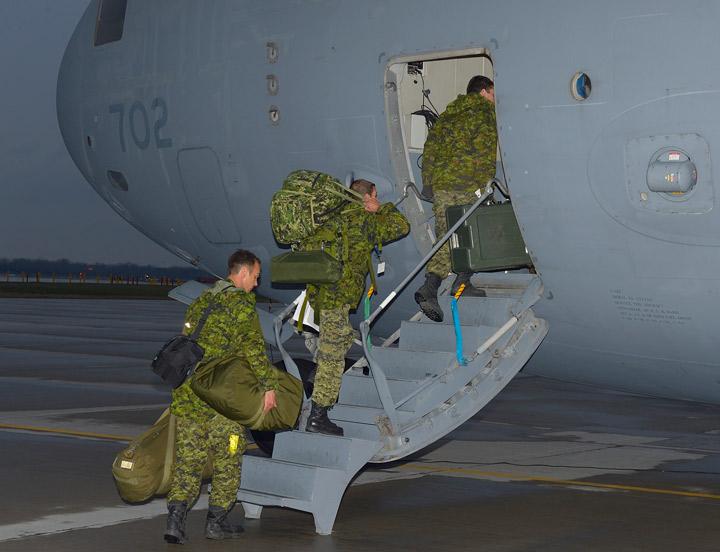OTTAWA – Canada’s disaster-relief effort in the Philippines is winding up, with the military hoping to get most of its people home for Christmas.

The announcement Monday signals the end of a successful, politically safe mission that one defence observer says could be repeated for other humanitarian crises in the run-up to the next federal election in 2015.
The Disaster Assistance Response Team, deployed in the wake of Typhoon Haiyan, has done its work and is preparing to leave the island nation.
READ MORE: Canadian forces deliver food to 2,000 isolated children in Philippines
“Today the situation in the Philippines has stabilized, with efforts now firmly focused on the way ahead, on recovery and reconstruction,” Neil Reeder, Canada’s ambassador-designate to the Philippines, said Monday.
“The need for the capabilities offered by the DART has passed.”
Col. Steve Kelsey, of Canadian Joint Operations Command, said the aim is to get many of the 315 deployed military personnel home for the holidays.
“We’ve got a lot of smart folks working very hard to get the bulk of folks home for Christmas,” he said.
READ MORE: Philippine relief donation deadline extended
He added he is “cautious about using a date, because we don’t want to create expectation for the families.”
- Roll Up To Win? Tim Hortons says $55K boat win email was ‘human error’
- Ontario premier calls cost of gas ‘absolutely disgusting,’ raises price-gouging concerns
- Bird flu risk to humans an ‘enormous concern,’ WHO says. Here’s what to know
- Election interference worse than government admits, rights coalition says
The Philippines government says the immediate relief efforts are finished and that it can work on long-term needs with its own resources.
“The government of the Philippines has also confirmed that their requirements for the relief phase have been met and civilian partners and the local government are now positioned to attend to the remaining needs of the population,” the Defence Department said in a release.
After the typhoon traced a path of destruction across the islands, Canada sent military personnel to the northern part of the island of Panay.
Walter Dorn, an expert in peacekeeping and a professor at the Royal Military College, says humanitarian relief operations consistently rank as the most popular type of mission among Canadians in public-opinion research, carried out by National Defence.
READ MORE: Death toll from Typhoon Haiyan in Philippines passes 6,000 mark
The end of the Afghan training mission and the country’s long involvement in Afghanistan have left the government reluctant to follow its allies into other potential combat hot spots, such as Syria, he said.
The government is also reluctant to commit large contingents toward peacekeeping missions, which are dangerous in their own right.
“We’re weary, so it leaves the non-kinetic missions,” Dorn said. “At least until the next election, I believe making contributions to humanitarian missions will be highly desirable.”
He noted that with the end of the assignment in Kabul, Canada will have only about 1,000 personnel on different United Nations missions around the world, many of them in staff jobs.
Defence officials say they will learn a lot from the deployment in the Philippines, a mission which didn’t garner as much media attention as the 2010 deployment to earthquake-ravaged Haiti.
Engineers cleared debris, opened roads and restored electrical power, Kelsey said.
A military water-purification system provided almost 500,000 litres of drinking water. Medical teams treated 6,500 patients and help set up aid centres. The military sent Griffon helicopters to reach isolated communities.
The whole effort was supported by an air bridge to Canada supported by giant C-17 transport planes. The initial reconnaissance team hit the ground on Nov. 10, with other personnel and supplies arriving in subsequent waves.

Comments